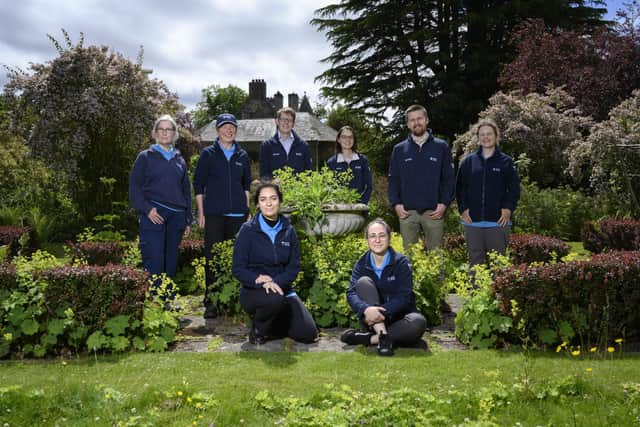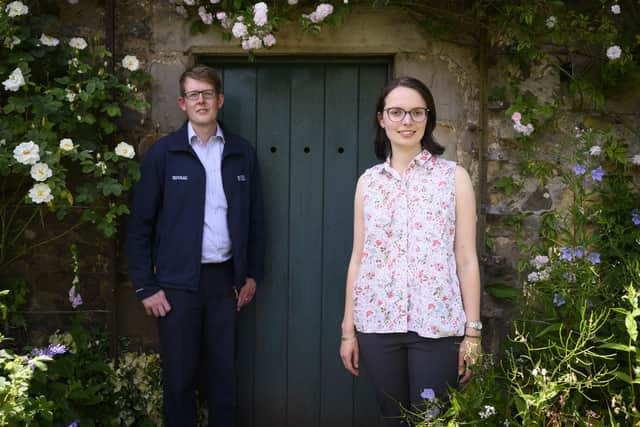Sustainable Scotland: £1m project will see more than 100,000 plants species logged in Scotland's favourite conservation gardens
Over the next three years the National Trust for Scotland will identify and catalogue every single species of plant growing at 39 properties across the country.
Estimates suggest the scheme will see more than 100,000 native and exotic plants documented, many of them very rare or endangered.
Advertisement
Hide AdAdvertisement
Hide AdBy correctly identifying each specimen, the PLANTS (Plant Listing at the National Trust for Scotland) project will help the organisation better manage and understand threats to specimens from diseases, severe weather, storm damage and the growing impact of climate change.
The initiative, which is being funded by members, donors and supporters, is also expected to rediscover long-lost plants and even uncover some new species.
It will also allow the trust to gain new insights into Scotland’s horticultural heritage and how it can be preserved for the future.
PLANTS – one of the most ambitious horticultural projects to take place in Scotland – is being led by Dr Anna Florence, curator of plant collections for the trust, and Dr Colin McDowall, project manager, alongside a team of experts who will help log the plants and their location.


Philip Long, chief executive of the National Trust for Scotland, said: “The Trust wants to do all it can to enable our gardens to flourish, and our new PLANTS project will help us with just that.
“Just as our castles and grand houses are full of artworks, textiles and furniture which need constant care, conservation and protection, our gardens are full of beautiful and diverse plants, many of which are commonplace, many of which are rare.
“This intensive project will help us to understand exactly what can be found in our gardens, establish why each is horticulturally important and provide the information we need to best look after them so they can be nurtured for all to enjoy.”
The charity is Scotland’s largest garden owner, with popular attractions such as Pitmedden in Aberdeenshire, Ayrshire’s Culzean Castle and Threave Estate in Dumfries and Galloway under its care.


Advertisement
Hide AdAdvertisement
Hide AdOther favourites include Inverewe in Wester Ross, Arduaine and Crarae in Argyll and the Pineapple in Stirlingshire.
Each comes complete with its own unique horticultural history and wildlife.
For instance, Crathes Castle in Aberdeenshire has many different species of plants growing in its five stepped Victorian glasshouses, which date back to 1886.
Made by the famous Victorian Mackenzie & Moncur firm, the impressive structures have been restored many times over the last century but still retain original features such as their rainwater tanks.
The greenhouses are home to exotic plants such as the mosslike plant Selaginella kraussiana, which was introduced from South Africa.
It’s hoped the PLANTS project will also shed new light on some of the horticulturists, plant collectors and other inspirational people whose vision and determination led to the creation of the iconic gardens.
Inverewe, on the north-west coast, was established by Osgood Mackenzie in the late 19th century and then later cared for by his daughter Mairi Sawyer for many years before being presented to the trust in the 1950s.
Branklyn in Perth was first started in the 1920s by John and Dorothy Renton and established using seeds sent from Asia – especially from plant collectors George Sherriff, from Stirling, and Frank Ludlow, who made pioneering expeditions to the Himalayas together.
Advertisement
Hide AdAdvertisement
Hide AdDr Florence added: “We are delighted to announce the start of our new three-year PLANTS project that will see us document the plants in our gardens.
“The sheer scale of our gardens means that we are constantly finding new species that we didn’t know we held in our collections.
“We expect to find a plethora of new plants, all with a unique story behind how they came to be in our gardens.”
Comments
Want to join the conversation? Please or to comment on this article.
